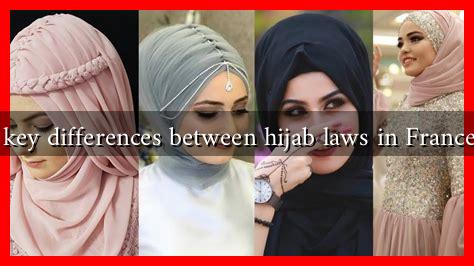-
Table of Contents
What are the Key Differences Between Hijab Laws in France and Turkey?
The hijab, a traditional headscarf worn by many Muslim women, has become a focal point of debate in various countries, particularly in France and Turkey. Both nations have distinct historical, cultural, and political contexts that shape their respective laws regarding the hijab. This article explores the key differences between hijab laws in France and Turkey, providing insights into the implications of these laws on society and individual freedoms.
Historical Context
Understanding the historical backdrop of hijab laws in both countries is crucial for grasping their current legal frameworks.
- France: The French approach to secularism, known as “laïcité,” has its roots in the 1905 law separating church and state. This principle has led to a strict interpretation of secularism, where religious symbols, including the hijab, are banned in public schools and government institutions.
- Turkey: Turkey’s secularism, established by Mustafa Kemal Atatürk in the early 20th century, initially allowed for the wearing of the hijab in public spaces. However, this changed in the late 20th century when a ban was imposed on hijabs in universities and government offices, reflecting a more stringent secular stance.
Current Legal Framework
The current laws regarding the hijab in France and Turkey illustrate their contrasting approaches to religious expression.
- France:
- In 2004, France enacted a law prohibiting the wearing of conspicuous religious symbols in public schools, which includes the hijab.
- In 2010, a further law was passed banning the full-face veil (niqab and burqa) in public spaces, citing security and integration concerns.
- These laws have sparked significant debate about religious freedom, integration, and the role of women in society.
- Turkey:
- In 2013, Turkey lifted the ban on wearing the hijab in public institutions, including universities and government offices, marking a significant shift in policy.
- This change was part of a broader trend towards greater religious expression under the ruling Justice and Development Party (AKP), which has Islamic roots.
- However, debates continue regarding the implications of this policy on secularism and women’s rights in Turkey.
Social Implications
The differences in hijab laws have profound social implications in both countries, affecting women’s rights, identity, and societal integration.
- France:
- The ban on hijabs in public schools has led to a significant number of Muslim girls feeling excluded from the education system.
- Many argue that these laws perpetuate Islamophobia and marginalize Muslim communities, leading to social tensions.
- Statistics show that the Muslim population in France is approximately 8-10%, and the hijab ban has been a point of contention in discussions about national identity and multiculturalism.
- Turkey:
- The lifting of the hijab ban has been celebrated by many as a victory for women’s rights and religious freedom.
- However, critics argue that this shift has led to pressure on women to wear the hijab, creating a new form of social coercion.
- Surveys indicate that while many women choose to wear the hijab, there is also a significant number who feel compelled to do so due to societal expectations.
Conclusion
The key differences between hijab laws in France and Turkey reflect broader societal values and historical contexts. France’s strict secularism emphasizes the separation of religion from public life, often at the expense of individual freedoms, particularly for Muslim women. In contrast, Turkey’s evolving stance on the hijab illustrates a complex interplay between secularism and religious expression, raising questions about women’s autonomy and societal pressures.
As these debates continue, it is essential to consider the implications of hijab laws on women’s rights, identity, and social cohesion. Understanding these differences not only sheds light on the unique challenges faced by Muslim women in each country but also highlights the ongoing struggle for religious freedom and personal choice in a globalized world.
For further reading on the topic, you can explore resources from Human Rights Watch.


